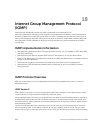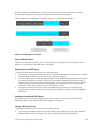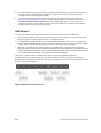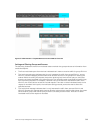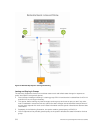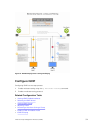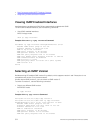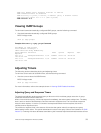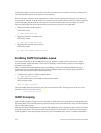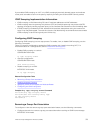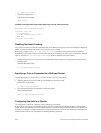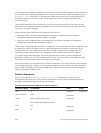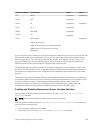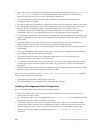
IGMP last member query response interval is 1000 ms
IGMP immediate-leave is disabled
IGMP activity: 0 joins, 0 leaves, 0 channel joins, 0 channel leaves
IGMP querying router is 1.1.1.1 (this system)
IGMP version is 3
Viewing IGMP Groups
To view both learned and statically configured IGMP groups, use the following command.
• View both learned and statically configured IGMP groups.
EXEC Privilege mode
show ip igmp groups
Example of the show ip igmp groups Command
Dell#show ip igmp groups
Total Number of Groups: 2
IGMP Connected Group Membership
Group Address Interface Mode Uptime Expires Last
Reporter
225.1.1.1 TenGigabitEthernet 1/1/1 IGMPV2 00:11:19 00:01:50
165.87.34.100
225.1.2.1 TenGigabitEthernet 1/1/1 IGMPV2 00:10:19 00:01:50
165.87.31.100
Adjusting Timers
The following sections describe viewing and adjusting timers.
To view the current value of all IGMP timers, use the following command.
• View the current value of all IGMP timers.
EXEC Privilege mode
show ip igmp interface
For more information, refer to the example shown in Viewing IGMP Enabled Interfaces.
Adjusting Query and Response Timers
The querier periodically sends a general query to discover which multicast groups are active. A group
must have at least one host to be active.
When a host receives a query, it does not respond immediately, but rather starts a delay timer. The delay
time is set to a random value between 0 and the maximum response time. The host sends a response
when the timer expires; in version 2, if another host responds before the timer expires, the timer is
nullified, and no response is sent.
The maximum response time is the amount of time that the querier waits for a response to a query
before taking further action. The querier advertises this value in the query (refer to the illustration in IGMP
Version 2). Lowering this value decreases leave latency but increases response burstiness because all host
Internet Group Management Protocol (IGMP)
373




